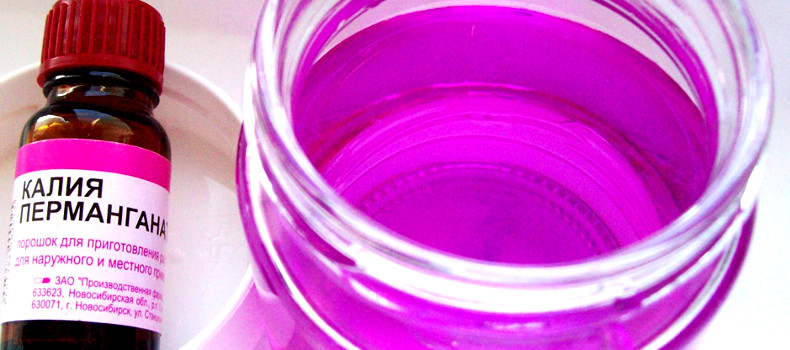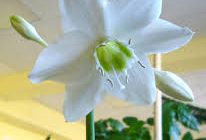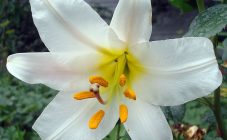Content:
Today, numerous varieties of hybrid lilies have slightly pressed the white fragrant lily (Lílium candídum) on flower beds. Although it not only blooms beautifully, smells good, but also has medicinal properties.
The countries of the Mediterranean are considered the birthplace of Candidium lilies. It is the only species that responds favorably to a subtropical climate with hot dry summers and humid winters without snow.
Since ancient times, the white lily has been used not only in the symbolism of royalty, but also in the Christian religion, where it is revered as a symbol of purity and chastity. Many Renaissance artists painted this flower on their canvases, which contributed to its rapid spread throughout the world. On Christian icons of the Virgin and the Archangel Gabriel, the image of a white lily flower is very often found as a symbol of purity and innocence. But in Germany, the lily flower was considered a symbol of death and the afterlife.
White lily flowers contain valuable essential oils, p-hydroxy-m-methoxytoluene, vanillin, linalol, acetic, palmitic, cinnamic, propionic acids and flavonoids.
The bulbs are also very useful and are used to make various medicinal tinctures. They have a high content of starch, soluble polysaccharides, phytosterols, amino acids and tannins.
In folk medicine, alcoholic tinctures from flowers or bulbs of white lilies are used. Their medicinal properties help with respiratory diseases, relieve pain, calm nerves, help fight heart disease and have a diuretic effect. The white lily is not an indoor flower, and its scent can cause headaches.
Description
Snow-white lily, or lat. Lílium candídum is a herbaceous perennial plant in the Liliaceae family.
The yellow bulb consists of many fleshy scales, tightly adjacent to each other. Does not form stem roots. The size of the bulb is 8-12 cm.
The leaves of the white lily are of two types. Basal leaves form a powerful rosette in autumn. Their size can be up to 25 cm in length. They grow directly from the scales of the bulb. On a long, strong, up to 1 meter, flower stem, there are narrow small leaves pointing straight up.
Large bisexual inflorescences, up to 7 cm in diameter, snow-white with a yellowish tint at the base. Up to 20 flowers can be harvested on one stem. The shape of the flower is correct, wide, funnel-shaped. The inflorescences are directed upward or to the side. The fruit does not form.
The flower consists of 6 petals, 1 pistil and 6 stamens with large, elongated bright yellow anthers. It has a very strong pleasant aroma. Blooms in mid-June. Duration of flowering is 3 weeks.
Candidium lily hybrids
Breeders, crossing L. Candidum, L. Testaceum and L. Chalcedonicum, received European hybrids of the snow-white lily. The varieties bred by selection have mainly white perianth color, flower size up to 12 cm and a pleasant aroma. The perianth shape can be tubular or funnel-shaped. Stems up to 1.5 meters densely covered with narrow lanceolate dark green leaves.
European hybrids are capricious. They require more shelter for the winter, love light, do not tolerate shading and require constant protection from fungal infections.
The best varieties known in Russia include:
- Apollo variety, which grows up to 120 cm. Its snow-white fragrant flowers have small dark dots in the middle. Blooms in June and July.
- Madonna has a tube-like flower shape with slightly curved edges. The flower of the purest white color is up to 12 cm in size and has a very delicate aroma.
Planting lilies in open ground
It is very easy to choose a place for planting white lily bulbs. Non-hybrid varieties will work well in light partial shade or in an open, sunny place. Hybrid varieties are suitable for growing in sunny areas.
There should be no dense bushes around the planting, which will create a too humid microclimate around the lily and block the plant from light.
The soil for the lily is loose, fertile, alkaline. In acidic soils, the flower will hurt and may die. Candidium lilies respond well to soil liming. In preparation for planting in heavy clay soils, it is necessary to add sand and drain.
The best planting time for any lilies is the beginning of autumn. The white lily planted during this period will have time to grow root foliage and adapt to winter.
Planting in spring will be stressful for the candidum lily. The plant will be sore and may not flower.
Site preparation for landing is carried out in advance. The soil must be dug up, all weeds must be removed, if necessary, sand and fertilizers that lighten the soil must be added (a bucket of humus, 100 grams of superphosphate and 50 grams of potassium sulfate and 0.5 kg of ash per 1 square meter). Water the planting site with plenty of water.
The bulbs are not buried during planting. It is optimal to plant them 10-12 cm deep, but for loose soils, planting can be done deeper, for heavy soil - shallower.
The distance between the bulbs should be at least 25 cm. During planting, you can drive a support for future stems into the hole, which will also allow you to determine the planting site while the plant is in the resting phase.
How to care for a candidum lily
Candidium care is simple. Top dressing is carried out during the entire growing season of the white lily. At the beginning of the season, an ash solution or dry substance is added under the root. Before flowering, you can feed the lily with complex mineral fertilizers containing potassium.
It is necessary to shelter plantings with lily bulbs for the winter only in regions with severe winters.
To prevent fungal infections, an aqueous solution of potassium permanganate is introduced under the lily root.
Watering is carried out as needed. Lilies do not like excessive moisture, but during dry periods, the amount of watering can be increased.
A lily transplant is carried out 5-6 years after planting. The plant grows, while the soil is depleted, the bulbs become cramped, and the flowers become smaller, or the lily stops blooming altogether.
Reproduction of white lily
The white lily is a very interesting plant. It does not form seed pods, does not form bulbs in internodes, and does not form stem roots on which lilies usually form babies. The bulbs of this lily over time build up children around them. After 5-6 years after planting the mother bulb, they can be dug up, the daughter bulbs with roots can be separated and planted separately.
It is also possible to divide the bulb into scales for further reproduction. One adult bulb can be divided into 20 parts, from which up to 5 small onions are formed.
A large healthy onion is chosen for division.The largest scales are separated from it, washed thoroughly and soaked in a weak solution of potassium permanganate for half an hour. After that, they are treated with a root-forming preparation, laid out on wet sawdust and placed in a mini greenhouse. The greenhouse should be placed in a warm and dark place. After two months, bulbs will appear at the base of the scales. They must be separated and planted in the ground for growing.
Diseases and pests
The white lily, especially its hybrids, is not resistant to fungal infections. The most common fungal diseases affecting the bulbs, leaves and flowers of lilies are:
- The fungus Botrytis cinerea (gray mold) attacks the leaves and flowers of the plant. The fight is complicated by the fact that the remains of fungal spores can easily tolerate low temperatures and can remain in the scales of the bulbs. For prevention, the bulbs are treated with Fundazol.
- The fungus of the genus Fusarium (fusarium) attacks the lily bulbs, which leads to the death of the plant. For prevention, they must be treated with a solution of Fundazol, Topsin M, Euparen, Bavistin.
- The fungus Cercospora (cercospora) attacks the tips of the leaves. Bordeaux liquid, Topaz or Hom is used to fight.
Lily is also exposed to viral diseases carried by insects (aphids, thrips, etc.):
- Cucumber and tobacco mosaics are carried by aphids. The leaves and flowers of the plant become covered with whitish spots and strokes, stop developing and die off. To combat, disinfect plants and inventory with karbofos.
- The rosette is carried by insects and leads to a thickening of the stems. They turn yellowish and the plant does not bloom. The fight is carried out by processing the plant with karbofos.
Lilies are defenseless against insect pests. Aphids, flower thrips, spider mites, lily flies, wireworms and bears love to feast on the succulent bulbs or leaves of the plant.
The fight against harmful insects is carried out all year round throughout the garden. Insecticidal preparations must be used to treat not only plants, but also the soil.
A flower bed with white lilies will decorate any garden. The floral scent attracts insects that pollinate other plants. Snow-white lily flowers look great in bouquets.


















